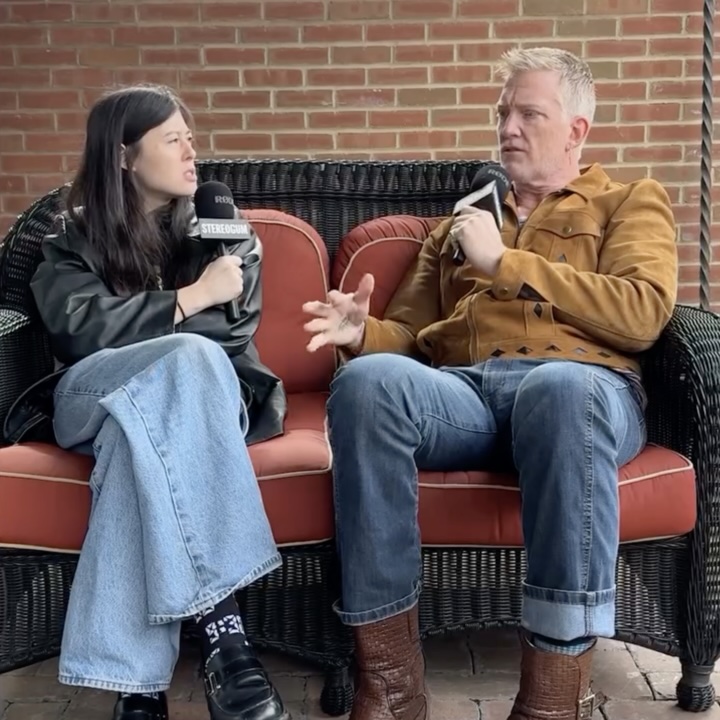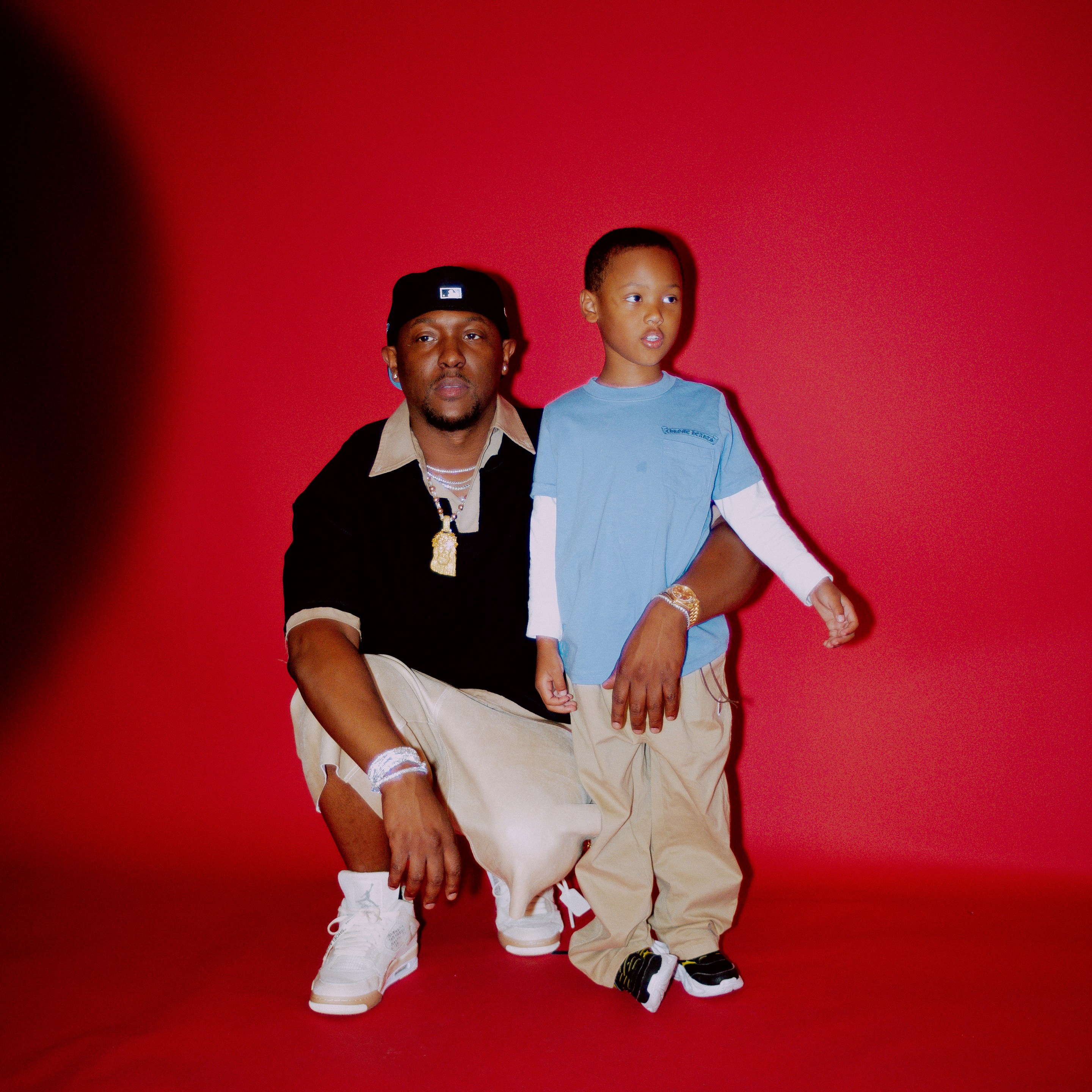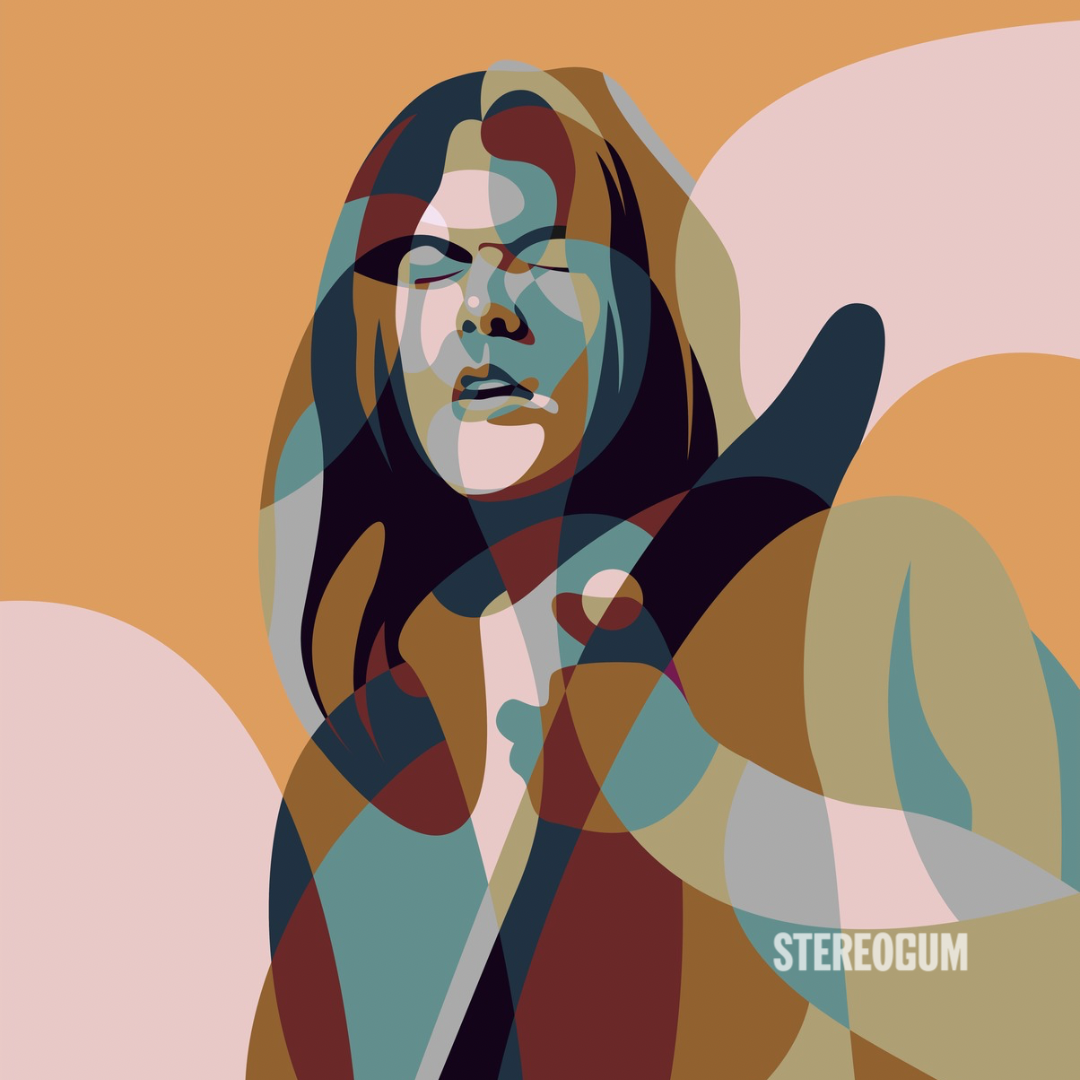The Olivia Tremor Control lined up their first big hometown show at the 500-cap 40 Watt in 1995. After a few years developing their kaleidoscopic live act in house shows and smaller clubs around Athens, Georgia, the psych rockers had built a reputation among the dozen or so people who might attend a given show, and a genuine mystique among those who hadn't yet had the chance. The Olivia Tremor Control, performing as a trio that night, were ready to take that next step from dingy basements and dives into the spotlight. Hype about the band was swelling locally, and the audience was packed with curious concertgoers eager to finally hear whether all that fuss was warranted. When the Olivias took the stage, though, their usual instruments were nowhere to be found. Rather than lining up behind mic stands and drums, the band sat down on the bare stage in a semi-circle with sitars and chord organs.
For their biggest audience to date, the Olivia Tremor Control played none of their songs, improvising a 45-minute drone piece instead. The crowd's reaction was mixed.
Today, Neutral Milk Hotel are known as the Elephant 6's flagship band; their magnum opus In The Aeroplane Over The Sea stands as the collective's iconic work. But on the heels of Music From The Unrealized Film Script: Dusk At Cubist Castle -- released 20 years ago last month -- the Olivia Tremor Control were the Elephant 6's most popular band and the one most observers thought could break from indie rock obscurity into the mainstream. Instead, the band's antipathy toward commercial accessibility, plus some bad luck, relegated the Olivias to the margins while Jeff Mangum and company sped past.
Mangum himself is a major part of the Olivia Tremor Control origin story. Before departing to focus on his own project, he played drums for a band called Synthetic Flying Machine, standing behind the kit Mo Tucker-style and pounding away with coat hangers instead of drum sticks. He split vocal duties with Will Hart and Bill Doss, friends he grew up with in Ruston, Louisiana. When Mangum left, Hart and Doss continued on, but the pair felt like a name change was in order. They settled on the Olivia Tremor Control, a name they lifted from one of Mangum's songs with his permission, plus some reciprocation, too: Hart came up with the name "Neutral Milk Hotel" for Mangum's eventual band.
Synthetic Flying Machine had their share of heavy, noisy elements, but upon Mangum's egress, Hart and Doss leaned away from influences like the Minutemen and Pavement and toward their more psychedelic impulses. Relative to other bands in Athens and the broader indie scene at the time, the Olivia Tremor Control aimed for a sprightlier, more complex sound.
[videoembed size="full_width" alignment="center"]
[/videoembed]
"Olivia was kind of a breath of fresh air in comparison," Elf Power's Andrew Rieger says. "A lot of the popular indie rock bands of the time, like Built To Spill or Superchunk, we liked that stuff, but it was very straightforward. Olivia was a lot different. We got into home-recording because of bands like Sebadoh and Guided By Voices, but even those bands were more primitive."
The Olivia lineup shifted a bit from there, but Hart and Doss were constants, and when it came time to record their first full-length in 1995, they fleshed out the group with John Fernandes (a friend from back in Ruston they had talked into moving to Athens to join their band as a bassist before discovering he was also virtuosic on violin and clarinet) and Eric Harris (a drummer Doss had met when both played in Julian Koster's Chocolate USA). The quartet converged on the Denver home studio of Robert Schneider (Apples In Stereo frontman, Aeroplane producer, Elephant 6 cofounder, and another former Rustonite) to get to work.
Hart brought with him a whole bunch of four-track recordings he had made over the years, and many of those recordings ended up on Dusk with minimal editing or overdubs. Doss arrived in Denver with only demos and ideas, recording them fresh in Schneider's Pet Sounds Studio. Hart and Doss are often considered the Olivia Tremor Control's Lennon and McCartney for the way they split writing and singing duties and the dichotomy between Hart's more experimental leanings and Doss's popcraft, but Fernandes and Harris contributed plenty to the album, Schneider plays on a number of tracks, and Mangum and Koster are each credited with a few instruments as well. Hart estimates at least eight different people played guitar on the album opener “The Opera House” alone.
[videoembed size="full_width" alignment="center"][/videoembed]
The result is as ambitious as a debut album can be, a sprawling double LP (not including Explanation II: Instrumental Themes And Dream Sequences, nearly 70 minutes of ambient collages released along with it) that meanders through different styles and genres but remains conceptually cohesive, holistic even as it shapeshifts from the Denny-esque exotica of "Frosted Ambassador" to the hallucinogenic Barrett-ish "Holiday Surprise 1, 2, 3," all the way to the soaring, Byrds-y album closer "NYC-25," 74 minutes without a second of filler or redundancy.
It's the closest thing the Elephant 6 Recording Company has to a statement of purpose for the collective as a whole. In short, they wanted to make something with the paradigm-shattering baroqueness of SMiLE, but from the lo-fi comfort of their bedrooms. Recorded and mixed entirely on four- and eight-track, Dusk At Cubist Castle is a superhuman effort of maximalist analog production, sonically distended with so many different ideas that it sounds a little different every time you hear it. Each bit persists only as long as it can sustain itself, never so fleeting as to feel undercooked but never so drawn out as to overstay its welcome.
The Olivias also applied their lo-fi methodology to the (lack of) precision with which they sought to channel their retro influences. That is, rather than using their favorite records as a how-to guide to be rigidly obeyed, they tried to rebuild those sounds from the ground up through their own means.
"They worked inside a paradigm, but they were not married to this Civil War Reenactment version of history," says Chunklet Magazine's Henry Owings, a longtime friend of the band who has released a few of their records. "They didn't own a Leslie speaker, so they would improvise. They would just get a plastic tube and then swing it around to make a Leslie sound. It was so great to not be married to using vintage equipment. It was always about the spirit of the music and production, rather than the nuts and bolts."
Dusk covers the best of both ends of the psychedelic spectrum: catchy, tightly written pop songs and inventive experimentation for its own sake, a parfait of infectious melodies and musique concrète esoterica, simultaneously clarifying and mystifying. On one hand, familiar elements like comforting hooks, lush melodies, and classic riffs can be traced to their source, usually this or that psych-pop pioneer, and on the other hand, Dusk is rife with the sorts of instrumentation (e.g. Tibetan prayer bowls, typewriter keys, or dripping water) and tape manipulation that sounds oblique even when it can be reverse engineered. At their best, the songs and sound collages on Dusk At Cubist Castle are evocative not just cinematically, but synesthetically, too.
[videoembed size="full_width" alignment="center"][/videoembed]
"We wanted to change the way people listen to music," Olivia Tremor Control multi-instrumentalist John Fernandes says. "There was an experimental scene. There was a pop scene. We wanted to combine those two things. Make people who love the Beatles also appreciate John Cage."
In the context of mid-'90s music, Dusk At Cubist Castle is unique on a philosophical level, too. It was a time defined by slacker disillusionment, Gen X jadedness, and reflexive irony and sarcasm, embodied by contemporary icons like Pavement, Nirvana, Beck and plenty of others. Candor and positivity were anathema at this time, a clear signal of squareness.
Nobody told the Olivia Tremor Control. The band's guileless whimsy and complete lack of self-consciousness is on full display on Dusk, from vague but radically sincere lyrics to the unapologetic plumbing of their music idols' deepest cuts. Today, the pendulum has swung back to where earnestness is again a key axis along which art in general is evaluated, but only because bands like the Olivia Tremor Control dared to put a libertine pursuit of happiness ahead of any cool kid affectations. In short, there's a joy in the Olivia Tremor Control's music that's exceedingly difficult to find in any era.
"The Olivias showed it was okay to be a little more fey, not worrying about having to be tough and rocking," Bryan Poole (currently of Elf Power, formerly of of Montreal, and briefly of the Olivia Tremor Control) says.
For some gigs, the Olivias would discard the rock pretense altogether and perform as Black Swan Network, an ambient alter ego for the band. Those performances typically included a lot of droning and found sounds (and little if anything that could be considered music).
You never really knew what you'd get when you showed up to an Olivia Tremor Control show, and even if they were mostly pulling from the poppier corners of their catalog, they typically threw in a curveball somewhere. They handed out programs for some of their shows, librettos for others, and grapefruit at one (at least). They decorated stages with Hart's expressionistic paintings. They spread tape players around clubs so that when Fernandes turned on a master power strip, the tape players inundated the space with bloops and whirrs and cheep-cheep-cheeps from behind chairs, under counters and inside bathroom stalls. At in-store performances, instead of setting up all their gear, the band would usually perform a series of their Dadaist a cappella pieces, like "Odorless Boatmen's Belt" or "Punchy Legato's Blister Parrot" or "The Italian Seaside Ice Jester." (These skits also worked well for filling time during a set when someone had to replace a string.) At one show, Harris set up a long tape loop and encouraged people to describe recent dreams into a microphone. As the loop played, people heard their own dreams repeated back to them and immediately recorded over.
Dusk At Cubist Castle garnered plenty of praise upon its release, and the live show continued to develop, morphing and mutating around a core of Hart, Doss, Fernandes, Harris and new keyboardist Pete Erchick. Whether the lineup on stage swelled into rococo double digits or shrunk to a relatively ascetic four- or three-piece, the most experimental bits of the set could work only because the band had such a strong backbone of songs. On the momentum of Dusk At Cubist Castle, the Olivia Tremor Control were nearing the escape velocity to ascend from indie-rock acclaim to mainstream stardom, but despite an obsession with a certain era of pop music, the Olivias had no interest in risking artistic purity for a more commercially viable sound, even rejecting licensing of their existing catalogue. They weren't big on self-promotion, either: Their faces are obscured in nearly every band photo from that time period.
[videoembed size="full_width" alignment="center"]
Terrastock 1997 - Olivia Tremor Control from Joe Turner on Vimeo.
[/videoembed]
The Olivia Tremor Control released Dusk's followup album, Black Foliage: Animation Music, in 1999, another double LP. By that point, the post-Nirvana record deal gold rush had died down, and a neo-psych movement that included bands like Grizzly Bear and Tame Impala hadn't quite taken hold yet. The Olivias were on an island. Still, a handful of major labels showed interest, but internal squabbling drove the band apart before they could sign a deal. To make matters worse, Flydaddy (the indie label that had released Dusk and Black Foliage) declared bankruptcy and folded, which meant the band had to buy back its own masters and lose out on that distribution and promotion. And then the entire music industry caved in.
After the breakup, members splintered into side projects, but the Olivia Tremor Control cast a long shadow over all of them. The Olivias eventually reunited, first for 2005's All Tomorrow's Parties (along with some club gigs) and then again for a tour in 2011, but with neither the post-hiatus romanticization of Neutral Milk Hotel nor the slippery persistence of of Montreal, they booked smaller venues than either of those Elephant 6 colleagues eventually played. The Olivias were working on a new album at the time of Bill Doss' death in 2012, and while there are still plans to finish and release it, it's hard to predict exactly when that'll be. It probably won't be on a major label, whereas an Olivia record from the early 2000s likely would have.
Elements of the Olivia Tremor Control's experimentalism can be heard in "bigger" bands like Radiohead, the Flaming Lips, Stereolab, and the Shins. There's probably no Animal Collective without the Olivias clearing a path first. It's a minor tragedy that the Olivia Tremor Control haven't received the same recognition as those other bands. The Olivia Tremor Control were never a band that quite fit in, nor a band that wanted to. Commercial success was never a goal, and even though it nearly happened anyway, no one seems to harbor any regrets about missing out.
"We would have liked that, but we just wanted to do it in the coolest way, in the way that we liked," Will Hart says. "We never felt tempted to go in that direction, any of us. We were a psychedelic band."
The Olivia Tremor Control story doesn't have as happy an ending as it deserves, but in the same way Dusk At Cubist Castle can appeal simultaneously to two very different aesthetics, it offers two different lessons at once. For anyone expecting a music career to turn into a payday, it's a cautionary tale. For everyone else, it's a model to emulate.






